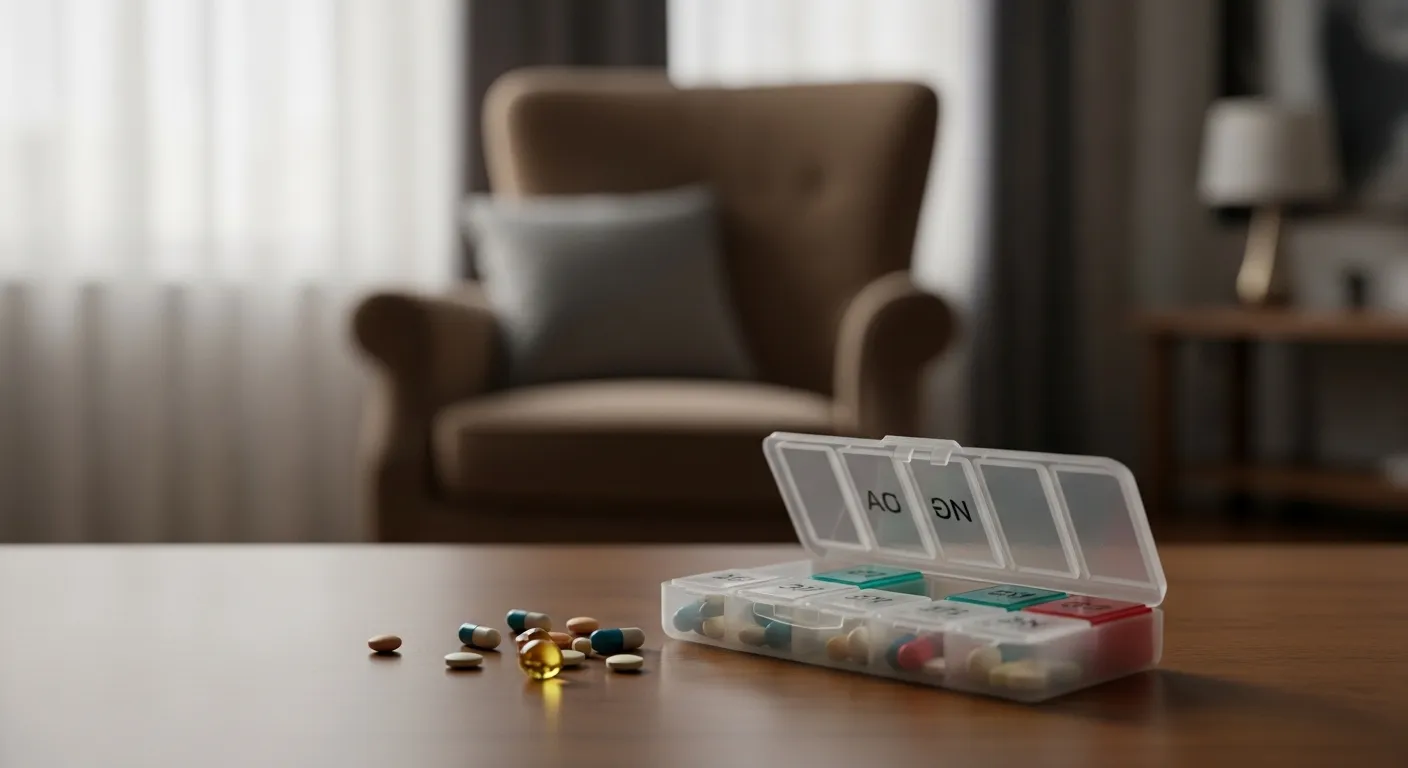
A Special Focus: How to Organize Pills for the Elderly
Managing daily medications is a common challenge, and creating a foolproof system is a cornerstone of home organization for senior safety. While the principles of sorting and zoning apply to everyone, organizing daily pills for an older adult requires special attention to detail to ensure doses are taken correctly and safely. This section addresses some specific tools and strategies.
The Role of Pill Organizers
Weekly or monthly pill organizers—the plastic boxes with compartments for each day of the week—can be an incredibly helpful tool. They provide a clear visual cue, helping to answer the common question, “Did I take my pills today?”
The benefits are significant: They simplify the daily routine down to opening one compartment, which is especially helpful for those with memory issues or complex schedules. They are also portable, making it easy to take the correct doses when leaving the house or traveling.
However, there are also risks to consider. The biggest risk is human error during the filling process. If a pill is accidentally placed in the wrong day’s compartment, it can lead to a missed dose or a double dose. Furthermore, once pills are removed from their original pharmacy bottles, they are separated from their detailed labels, which include dosage, warnings, and refill information. Most pill organizers are also not child-resistant, which is a critical safety consideration if children ever visit the home.
Our recommendation: Before starting to use a pill organizer, have a conversation with your doctor or pharmacist. They can confirm if this is a suitable method for you. When you fill the organizer, do it once a week in a well-lit area with absolutely no distractions. Lay out all the original prescription bottles and carefully place the pills one medication at a time. Always keep the original pharmacy bottles in a safe, designated place for reference. Never throw them out until they are empty.
Keeping Original Containers vs. Decanting
The term “decant” in organizing means to transfer something from its original packaging into another container. While this can create a uniform, aesthetic look for things like pantry staples, it is a practice to be avoided with medications.
It is always safest to keep prescription medications in their original containers from the pharmacy. That bottle is more than just a container; it’s a vital piece of medical information. It includes your name, the medication’s name and strength, dosage instructions, the prescription number, the pharmacy’s contact information, and the expiration date. In an emergency, first responders or a poison control expert will need this exact information. If you have questions about an accidental ingestion, you can get immediate, expert help from Poison Control (U.S.), and they will ask for the details on the bottle.
The only items in your medicine cabinet that are safe to decant are generic supplies. It’s perfectly fine to move cotton balls into a small glass jar or take bandages out of their bulky cardboard box and place them into a small, clearly labeled bin. But for anything you ingest or apply for medical reasons, the original container is the safest home.
Using Technology and Reminders
Don’t forget to leverage simple technology to support your medication routine. A basic alarm on a smartphone, watch, or smart home device can provide a reliable daily reminder for taking pills. There are also specialized medication reminder apps that can help track doses and schedule refills. For those with more complex needs, automated pill dispensers are available that can dispense the correct pills at the correct time, often with a locking mechanism to prevent access to other doses. These tools can work in tandem with your newly organized physical space to create a comprehensive safety net.

















